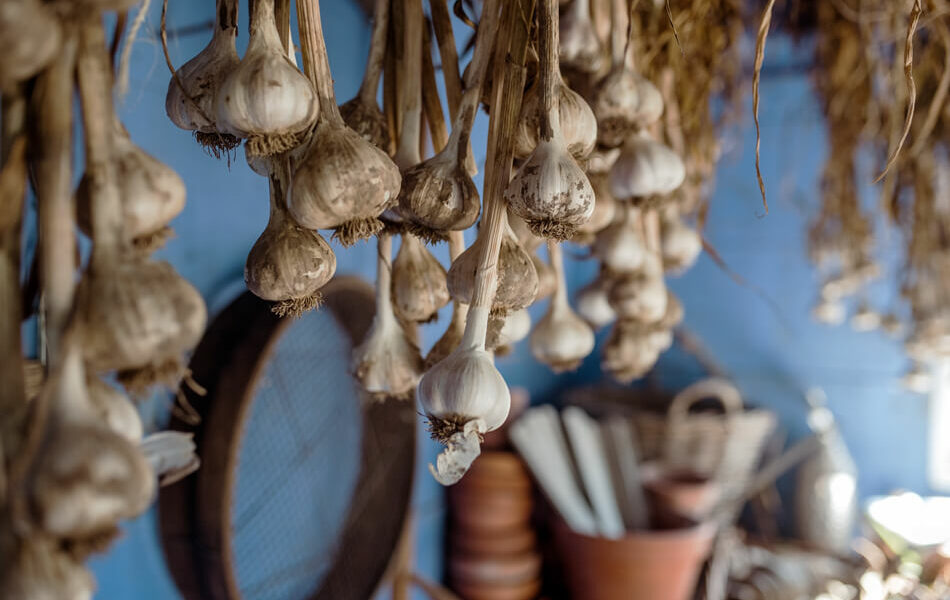Is Garlic Good for Diabetes? Benefits and Side Effects
Garlic has long been recommended to those with diabetes to improve blood sugar levels, but is it actually good for diabetes? We take a deep dive into the link between garlic and diabetes in this article.

Diabetes is a condition that affects the body’s ability to produce insulin and control blood sugar levels. There are two kinds of diabetes mellitus: type 1 and type 2.
Type 1 diabetes is a genetic condition where the body attacks the pancreas resulting in an inability to produce insulin. Type 2 diabetes usually shows up later in life and is when the insulin in your body does not work properly or is not produced in high enough quantities.
Garlic, which is sometimes referred to as a superfood, is commonly consumed by adults around the world. It is known for its strong flavor, smell, and spice. Consuming garlic has been linked to reduced cholesterol and blood pressure levels, but it may also help reduce blood sugar levels.
In this article, we’re going to take a look at the health benefits of garlic consumption for those with diabetes and how it can be incorporated into your diet. Take a look below to learn more now.
Is Garlic Good for Diabetes?
Multiple studies have shown garlic consumption to be a good method of reducing and managing blood sugar levels. Eating garlic has also been shown to help reduce the risk of atherosclerosis, which is of particular concern for those with diabetes.
Garlic contains many vitamins and minerals, among them are vitamins B6 and C. Vitamin B6 is involved in the regulation of carbohydrate metabolism, which helps maintain healthy blood sugar levels, and vitamin C also plays a role in maintaining healthy blood sugar.
Additionally, garlic contains zinc and other antioxidants known to reduce blood sugar levels. Allicin and other compounds are known to increase insulin levels.
It is thought to improve blood glucose levels in those with prediabetes and help manage the condition.
Does Garlic Lower Blood Sugar?
Several studies have shown that garlic may have a positive effect on your blood sugar levels. It is thought that the presence of vitamin B6 may help regulate blood sugar levels through its role in carbohydrate metabolism.
In addition, the presence of zinc, vitamin C, and other antioxidants are thought to help regulate blood sugar levels and increase insulin sensitivity. The compounds in garlic, like allicin, may help raise insulin levels, helping your body maintain healthy blood glucose levels.
Raw garlic is thought to have higher levels of compounds like allicin, so it may be more beneficial for those with diabetes to eat uncooked garlic.
4 Health Benefits of Garlic for Diabetes
Garlic has many health benefits, and everyone, including those who do not have diabetes, can benefit from eating garlic. Below we have summarized some of the health benefits of garlic.
#1 Reduces cholesterol levels
Eating garlic is thought to have a positive effect on your cholesterol levels. Indeed, research suggests that consuming just half a clove of garlic each day may help lower your cholesterol levels by 10%.
High blood cholesterol levels can be bad for your heart and overall health. With high cholesterol levels, you are at more risk of developing fatty deposits in your blood vessels. These fatty deposits can build up, cause blockages, make it more difficult for blood to move around your body, and may break off, causing a heart attack or stroke.
Lowering your blood cholesterol levels is best for your overall health, which is why it may be a good idea to consume garlic more often.
#2 Increases insulin production
The compounds present in garlic may help with diabetes management by increasing insulin production in the pancreas. Allicin is a plant compound found in garlic that is thought to stimulate the pancreas to increase insulin secretion.
Indeed, allicin may even help improve insulin sensitivity in individuals who have prediabetes, which could reduce the risk of developing type 2 diabetes.
Note: There is some dispute as to the levels of allicin in aged garlic extract, cooked garlic, and garlic supplements, which is why it may be best to consume raw garlic if you are eating it for diabetes management.
#3 Regulates blood sugar
Many of the nutrients found in garlic are thought to help with the regulation of blood sugar, which is why it has long been recommended that you consume garlic if you have diabetes.
Vitamin B6 can be found in garlic. This vitamin plays a role in the regulation of carbohydrate metabolism and can help stabilize blood glucose levels. In addition, vitamin C, zinc, and other antioxidants may also help maintain healthy blood sugar levels.
#4 Boosts metabolism
Garlic is thought to help boost metabolism, which can aid in weight loss and may reduce your risk of developing type 2 diabetes or push your diabetes into remission. Boosting your metabolism means helping your body burn off calories more quickly, which can help you maintain a caloric deficit and lose weight.
Garlic may also be useful in helping to burn off excess fat as it helps increase lipid metabolism. This can, therefore, aid weight loss.
Note: Garlic may be an excellent addition to the keto diet or an intermittent fasting regime to boost further fat loss during ketosis.
Side Effects of Garlic
Eating garlic comes with many health benefits for blood sugar levels, blood pressure, and cholesterol levels, but it may also have some side effects. Those following a low FODMAP diet should avoid consuming garlic due to the digestive issues it can cause.
Garlic may also cause heartburn in those with GERD and can increase your risk of bleeding, especially if you are already taking blood thinners.
It is thought that 1–2 cloves of garlic daily can provide you with the health benefits it offers without inducing too many adverse effects. If you suffer any digestive issues when you consume garlic, lower your dose or stop eating garlic completely.
You can speak with your doctor about other methods of diabetes management if you find garlic to be a problem for your body.
How to Add Garlic to Your Diet
Garlic can be added to your diet in a range of ways for diabetes management. You can try adding it to pasta, rice, and other dishes as a form of seasoning. Raw garlic can be added to salad dressings, and aged garlic could be used as a seasoning or in spreads and sauces too.
There isn’t a specific amount of garlic you need to eat each day, though some recommend 1–2 cloves per day. If you find this to be an overpowering amount, you could look out for garlic greens instead.
FAQs
Garlic is thought to be a good remedy for high blood pressure. Indeed, garlic supplements have been shown to be effective for those with hypertension in a number of studies. Garlic is also good for high cholesterol, which may help reduce blood pressure too.
You can eat garlic every day. There is no recommended dosage for garlic. Some people may experience digestive issues from garlic and should lower their intake if the issues seriously impact their lives.
Garlic is used in diabetes management and is thought to contain plant compounds that increase the secretion of insulin from the pancreas. The compound allicin is thought to be responsible for this effect.
A Word From Our Nutritionist
Diabetes is a condition in which the body cannot manage its own blood sugar levels.
There are two main kinds of diabetes: type 1 and type 2. Type 1 diabetes mellitus is thought to be genetic and occurs when the body attacks the pancreas and inhibits insulin production. Type 2 diabetes develops later in life and is when the body cannot produce enough or does not respond well to insulin.
Garlic is considered a good way of managing blood sugar levels at home. It is thought that fresh garlic lowers the blood sugar level and may decrease insulin resistance. This is thought to be because of the vitamins and minerals present in garlic.
Vitamin B6 plays a role in the regulation of carbohydrate metabolism; therefore, it can help maintain healthy blood sugar levels. In addition, zinc, vitamin C, and other antioxidants may also help with the management of blood glucose.
The presence of the plant compound allicin is also thought to help with diabetes management as it is said to stimulate inclusion secretion and help increase insulin levels in the blood, making it easier for the body to control blood sugar levels.
Diabetes patients have long been recommended garlic as a method of controlling blood sugar levels, and it can be incorporated into the diet through soups, stews, salad dressings, pasta sauces, and spreads. It is recommended you let chopped garlic sit for a few minutes to increase the presence of allicin.
In addition to its benefits for blood sugar management, garlic may also be useful in lowering high blood pressure, reducing high cholesterol levels, and boosting metabolism. All of these benefits can help improve your overall health and well-being.
Conclusion
Garlic has been shown to lower blood sugar levels and increase insulin levels. This can help successfully manage diabetes and may be useful for those with type 2 diabetes and prediabetes. Garlic also comes with other benefits, including lower blood pressure and cholesterol levels.
Garlic is very easy to incorporate into your diet and can form part of a healthy and balanced diet.
If you’re looking for a way to easily manage your prediabetes or diabetes, remember to check out the best apps for diabetes management.

















































 Select your language:
Select your language: 








